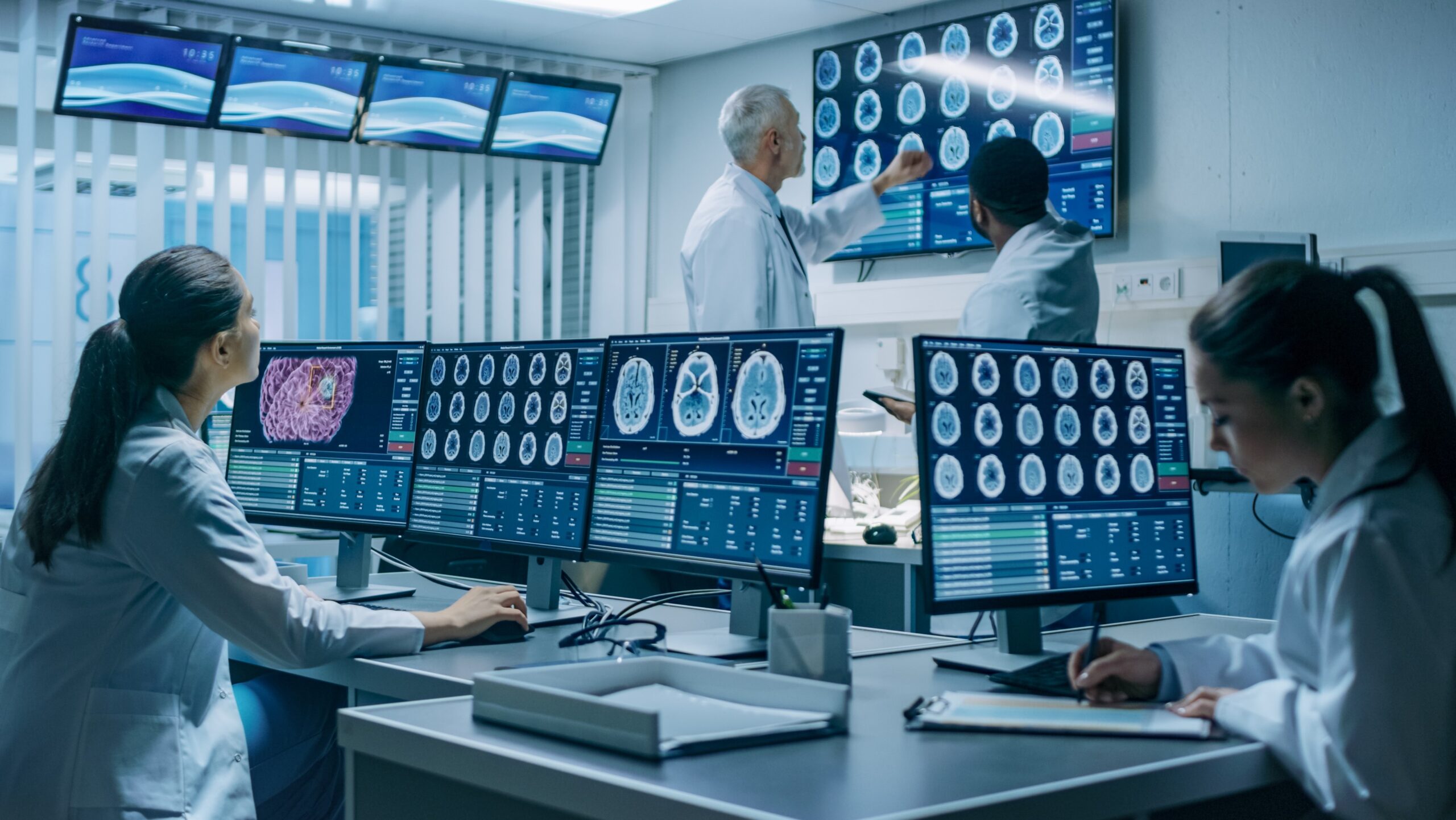

Therapeutics Innovation in the Era of Pandemic
Pharma and biotech companies have shown an incredible response to the COVID-19 pandemic. Resources have been strategically allocated to research efforts in order to provide therapeutic solutions in a timely manner. Here are some highlights of the key innovations against COVID-19.
At IAG, we witness first-hand how Artificial Intelligence can truly streamline time-consuming processes when developing new therapeutics.
Imperial College London has demonstrated how powerful AI tools can be to fight the COVID-19 pandemic. It has been used to associate already existing drugs to COVID-19 pathogenesis and infection pathways. Baricitinib is one of the compounds that have been identified by this method. This existing Rheumatoid Arthritis therapy prevents interleukin-6 to be an exacerbating cytokine in severe immune response cases against SARS-CoV-2.
Interestingly, Regeneron and Sanofi are currently targeting the same cytokine in their newly initiated Phase II/III U.S. Trial, testing the efficacy of the monoclonal antibody Kevzara® (Sarilumab) on patients suffering of severe COVID-19.
AI, machine learning and process automation are IAG’s go-to tools to fast-track clinical trials.
There are also other options to get the answers fast. Drug repurposing has been particularly attractive considering compounds’ toxicity would have already been tested. For instance, Remdesivir, an anti-viral drug which had been developed by Gilead Sciences in response to the 2014 Ebola outbreak, has previously shown efficacy against other coronavirus infections and could be a great repurposed drug for the current COVID-19 outbreak. The compound has been provided to China where efficacy trials against COVID-19 will be conducted in infected individuals with and without severe symptoms. With its safety profile already investigated, approval for the use in patients could be granted much faster, increasing the speed at which treatments could be issued.
Collaboration between biotech and other parties have also seemed to be a method of choice to increase the resources but also the expertise dedicated to slowing down the spread of COVID-19.
At IAG, we have seen how implementing strategic partnerships of medical imaging experts, computational power and clinical operations can quite impressively shorten clinical trial length and also give a more profound understanding of the data, thus ensuring adequate development and application of therapeutic products. A great demonstration of such collaborative power has been seen from VIR Biotechnologies. In the past three weeks, they have announced no less than three COVID-19 related partnerships to accelerate novel antibodies discovery and therapies availability. With help from their partners, VIR utilizes their platform to identify antibodies that bind SARS-CoV-2, which were isolated from patients who had survived a SARS infection. These novel antibodies, which could act via direct pathogen neutralization or immune system stimulation, are being engineered and tested with the aim of greatly improving their therapeutic potential and increase our chances of rapidly developing effective therapies.
Vaccines are also at the forefront of prospective therapies. DNA and RNA vaccines are particularly appealing because of their scalability and protective power; scalability because they are stable and cheap to mass-produce, and protectivity because of their herd immunity properties. Biopharmaceutical companies have shown great innovation by employing different approaches to vaccines development. For instance, Inovio has developed a modified version of their MERS vaccine with incredible responsivity to research efforts. This DNA vaccine was produced just 3 hours after SARS-CoV-2 gene sequence was published allowing clinical trials to be planned for as soon as April. mRNA vaccines have also been of great interest in the biopharma community. This therapy option has been the focus of the German biotech CureVac and American Moderna, who produced enough mRNA vaccines to start first-in-human safety and toxicity trial in a record time of 42 days!
Collaboration and scientific achievements against the COVID-19 pandemic have been truly impressive and inspiring. It seems that the 2014-Ebola outbreak was a great warning and lesson on how to handle such a difficult situation on a scientific but also political point of view.
With such effort underway, we can only be confident for the future of the life science industry which displayed a sense of urgency for the greater interest of public good.
About Image Analysis Group (IAG)
IAG, Image Analysis Group is a unique partner to life sciences companies. IAG leverages expertise in medical imaging and the power of Dynamika™ – our proprietary cloud-based platform, to de-risk clinical development and deliver lifesaving therapies into the hands of patients much sooner. IAG provides early drug efficacy assessments, smart patient recruitment and predictive analysis of advanced treatment manifestations, thus lowering investment risk and accelerating study outcomes. IAG bio-partnering takes a broader view on asset development bringing R&D solutions, operational breadth, radiological expertise via risk-sharing financing and partnering models.
Learn more: wp1.ia-grp.com
Reach out: imaging.experts@ia-grp.com
Follow the Company: Linkedin
Engage with our team
Dr. Olga Kubassova, CEO: www.linkedin.com/in/olgakubassova/
David Chia, CCO: https://www.linkedin.com/in/jahyungdavidchia/
Dr. Diana Dupont-Roettger, Chief Scientific Alliance Officer: https://www.linkedin.com/in/dianaroettger/
